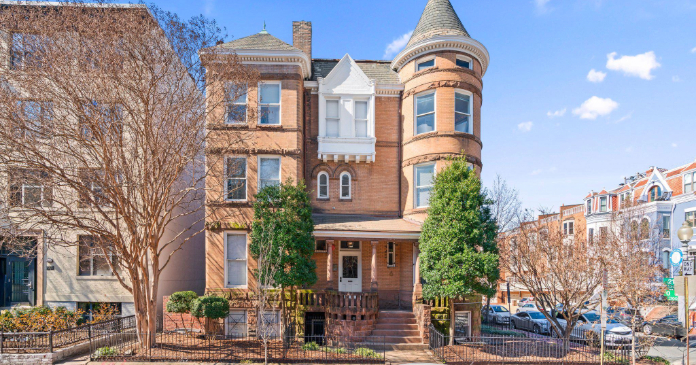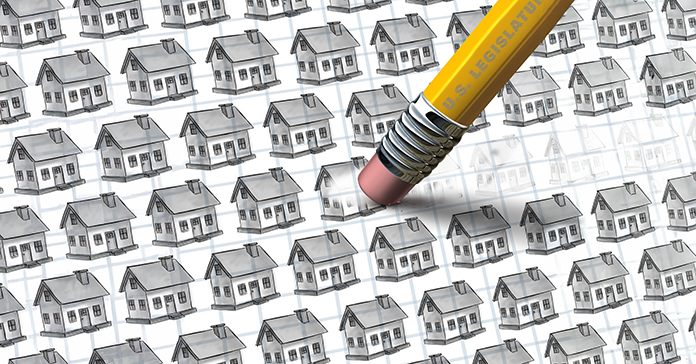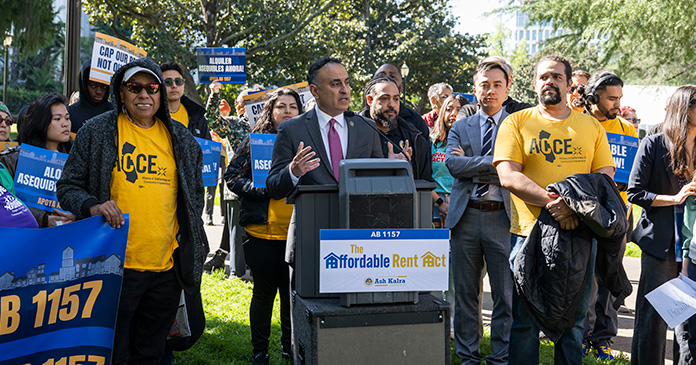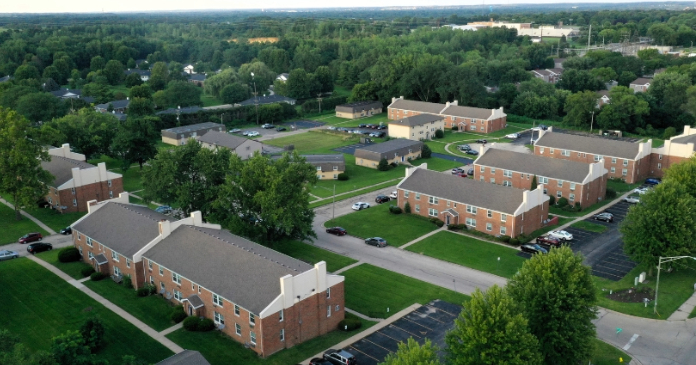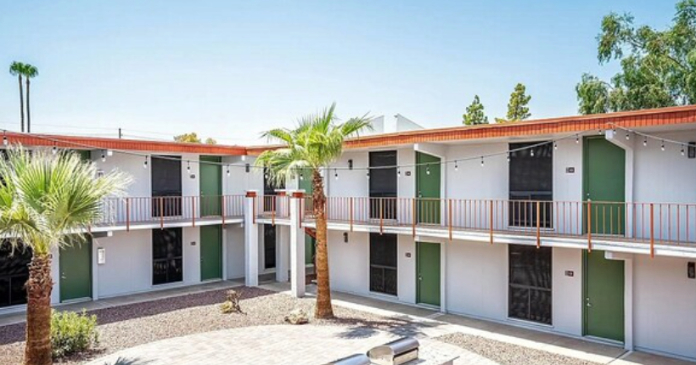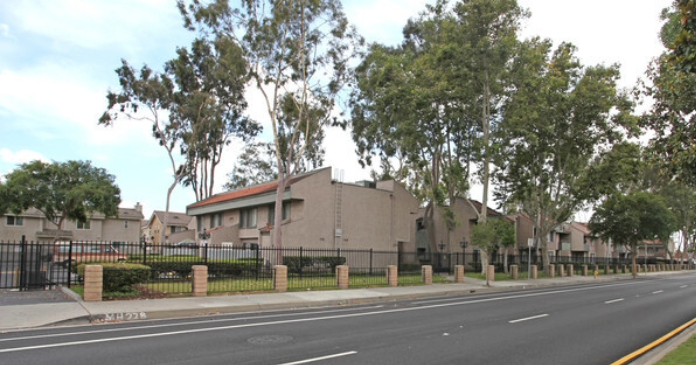Hard work and a passion for the business. That may sound corny, but the DeSouza brothers prove that it’s true. Cal and Frank DeSouza, who currently are well underway on the conversion of four Arizona apartment communities and a boutique hotel and a ground-up condo deal in Downtown Phoenix, started their career in real estate with $5,000 they’d saved from their salaries and a $5,000 line of credit. In August 1985, having attended a seminar about real estate investment that helped to inspire them, they used that equity to buy a little house in Toronto, Canada, for $59,000.
The brothers, who founded Mentor Properties in 1989 as their real estate business in Canada began to flourish, also put a lot of sweat equity into that little house in Toronto, wielding hammers and paint brushes themselves, and their passion for the business grew along with the value of the asset, which they sold in August 1986 for $83,000 and a net profit of $11,020.
“We really enjoyed it. We had a passion for it. We sort of lived and breathed it, so we were able to put the time and energy and effort into working hard and making sure that we gained knowledge from books and others. It excited us so much we just engulfed ourselves and dove into it with everything we had,” Cal DeSouza explained recently of the venture that started him and his brother on the road to success in the multifamily arena.
“It was pretty much hands on. That’s how we learned to improve and renovate, and starting from that basic foundation certainly didn’t hurt,” says DeSouza, managing partner of Mentor Properties and of Belleview Communities, Mentor’s U.S. condo conversion division, and Sedona Homes, Belleview’s twin in Canada. Belleview Communities and Sedona Homes were created three or four years ago, when Cal and Frank, who is CFO, re-entered the condo conversion game and decided to separate those businesses from their corporate parent, which continues to focus mostly on value-add apartment deals in Arizona and Canada.
The brothers steadily worked their way through two more single-family renovations in Toronto, earning nearly $40,000 on the sales of those.
They plowed that profit into their first multifamily rehab in February, 1986, when they purchased a building with four apartments and two non-conforming basement units for $220,000. After minor repairs that made the lower units live-able and eviction of undesirable tenants, they sold it about nine months later for $340,000 and a net profit of $85,000, and their multifamily business took off.
From early 1986 through October 1987, they bought, rehabbed and sold 278 apartments in five Toronto communities, ranging in size from that first six-unit deal to a 108-unit asset, for a total net profit of $987,000, before moving west to Calgary in 1988, the year that city hosted the Winter Olympics. They bought two apartment communities out of foreclosure there, rehabbed the first 120-unit community and sold it in 1989 for a profit of $425,400. They transformed the second, a 96-unit apartment community, into for-sale units, which they sold in bulk to a group of Vancouver investors, earning a profit of $735,000 in their entry into the condo conversion arena.
“Then, we started reading about the Resolution Trust Corporation (RTC) in the States and saw some good opportunities there, predominately in the Southwest. And, certainly the warmth and the sunshine didn’t scare us,” DeSouza recalls. “Calgary is basically north of Montana and it was a two-day drive, so we looked at Houston, Dallas and Phoenix because the pricing there was good, the opportunities abundant and the risk was abundant, too. But we felt Arizona was a growth story and everything seemed to be a good omen, so Phoenix was chosen over Houston and Dallas and we were happy about being there because Phoenix has a winter visitor market and a retiree market and Canadians were going down there with the strong Canadian dollar. We thought the housing market in Arizona might come back a little bit quicker than in Houston and Dallas because it could rely on more than just primary home owners and investors,” he said.
Mentor bought a 106-unit community in Mesa and 152 units in Apache Junction out of foreclosure from the RTC for $8 million U.S in 1992 and 1994, respectively, converted them to condos and mass marketed them to retirees and snowbirds from the Midwest and Canada, earning profits of just over $3 million before the weakening Canadian dollar and foreclosures in Canada prompted them to return there, where they bought and rehabbed or converted another 10 communities between 1996 and 2004, when their research indicated it was time to go back to the desert.
They bought 96 units in Scottsdale in November 2004 for nearly $7 million, converted them to condos and sold out the community by April 2006 for a total of $17,300,000, netting $7 million on the deal that was the first for Belleview Communities, Mentor’s newly minted U.S. condo division.
“So, Mentor is sort of the overriding company that buys everything and then, if the properties are going to be kept as apartment buildings or commercial property, they stay within the Mentor brand.
If it’s bought in Canada and converted, it goes under Sedona Homes and if it’s in the U.S., it goes under Belleview Communities,” DeSouza explained.
Since the DeSouzas returned to the Valley of the Sun, Mentor has completed one apartment repositioning, the sale of which netted the company’s greatest realized profit to date. Mentor acquired the 472- unit Archstone Old Town Scottsdale for $57 million in July 2006 and separated it into two rental communities–the 264-unit Monaco and the 208-unit Monte Carlo–and spent $1 million on renovations.
“We ended up selling it for $76 million seven months later to Colonial Properties Trust. It’s a great property with a great location in Scottsdale and still had some great potential. It’s close to one they just bought about a mile away, so there was some synergy there,” said DeSouza, whose company cleared more than $10 million on the deal.
In August 2005, the DeSouzas paid Phoenix-based Pillar Communities $61 million for the 11-year-old, 348-unit San Mateo Apartments in Scottsdale, which Cal believes was the equivalent of landing on Boardwalk in Monopoly. The property is situated just across the street from Kierland Commons, the premier urban master-planned community in Arizona, a location he expected would appeal to the move- up buyer–a demographic as yet untapped in ritzy Scottsdale.
Despite the slowdown in the condo market that began around 18 months ago, 280 of the condos in the community that has been renamed The Plaza Residences were sold by the end of January and sales pace continues to be steady, he said in mid-January.
“It’s a great second-home-buyer market and we’re getting a lot of Canadians with the strong Canadian dollar. It’s our most expensive condominium development and also our best selling development because of the location, which is second to none in Arizona,” DeSouza said.
“It just shows that, especially today when the market is in the state it’s in, that people will buy in the best locations because they know, when the market comes back, those locations will come back the fastest,” said DeSouza, who not only has a bit on of an edge on the competition thanks to his company’s Canadian connection, but also markets to a buyer demographic many condo converters try to keep to a minimum–the investors. Belleview offers seminars and services to investors who buy Belleview’s condos and sells up to 50 percent of the company’s converted units to those who are buying them as income generators.
“We introduce them to our whole investor platform, where we offer different levels of service, depending on what they want. In our Managed Asset Program (MAP) we put all the pieces in place so they can own real estate without the hassles of being a landlord. We get the rents collected, get the HOA (homeowner association) dues and the taxes paid,” he explained.
Pillar Communities provides HOA services for the assets Belleview converts–the same Pillar Communities from which the DeSouza’s bought the former San Mateo Apartments. “Pillar Communities sold the property to us and we said, ‘You guys do such a good job managing Class A properties, can we get you excited about starting an HOA management company?’ They said they’d think about it and the next thing you know, they were in the HOA business,” he said, adding that Pillar Communities’ subsidiary Pillar Realty is the designated broker for all of Belleview’s condo sales, which continue to be strong enough to support DeSouza’s continued enthusiasm for the business.
But, even with those advantages, he says, he’s not immune to the effects of the condo conversion collapse that really started picking up steam in mid-2006 and hasn’t been helped by the chaos in the debt market caused by the subprime blow-up. Like the other condo converters and builders in oversupplied markets like Phoenix, Belleview Communities is experiencing a reduction in sales velocity and the pinch of concessions.
“Just like everybody else, our sales are down from what they were a year ago and certainly six months ago when subprime hit. It’s affecting loan qualifications for buyers, so our timelines are being pushed out in terms of the completion dates,” said DeSouza, explaining that he was seeing sales of around 15 or 20 a month when the market was at its hottest and now sales are down about 60 percent from the boom times.
For example, the conversion of the 25-year-old, 184-unit Camelback Terraces, which Mentor bought from Los Angeles-based CB Richard Ellis Investors for $20.24 million and renamed The Arcadia Residences in November 2005 with plans to sell out by March 2008, had 19 units left to sell in mid-January. DeSouza expects to close out by June.
Likewise Mentor bought the 195-unit Brick Commons, formerly the Acapella Apartments in Central Phoenix, from a California investment group for just north of $26 million in March 2006, with plans to spend around $4 million on an 18-month conversion of the seven-year- old asset and sell out the units at prices between $150,000 and $200,000 by September 2008. But, at the beginning of the year, about 70 of the 195 units that feature brick accent walls and hardwood floors were still unsold. Now, DeSouza is looking at closing out sales there sometime in the first couple of months of next year.
Despite the slowdown, the DeSouzas haven’t given up on the conversion game. Last June Belleview Communities teamed up with commercial specialist Phoenix-based Biltmore Holdings to help convert a 310-unit apartment community in Flagstaff that the JV has dubbed The Arbors.
Biltmore bought the asset for $24.75 million in 2006 and Belleview entered the picture in 2007, when a mutual JV partner suggested the two companies might work well together.
“Our role there is to be the asset manager and essentially oversee everything to make sure that the conversion is a success,” said DeSouza, who wouldn’t be reluctant to do another deal in Northern Arizona, if the right opportunity comes up.
“Since we came in nine months ago, we have sold 60-odd units there and, in light of everything that happened with the subprime in the second half of the year, we’re pleased we were able to push out 60 units in the second half,” he said, adding that he plans to ramp up the marketing program at The Arbors in three or four months with the expectation of selling around 100 units in 2008 and 100 units in 2009, and plans to finish the conversion at the end of 2009.
“We’re doing a lot of business there because the rents are so high because of Northern Arizona University. The average house price in Flagstaff is about $100,000 more than the average house price in Phoenix, so rents are high and vacancies are low. It’s a very strong market for rentals, so we’ll really be pushing our investor platform up there and our second-home platform and our buyer platform. We’re feeling bullish now that we’re there and we’ve got everything tweaked and ready for 2008, so we’re excited about that,” he said.
And he’s equally enthusiastic about Belleview’s first ground-up condo project, DNA Condominiums, which has seen several changes in plans since the DeSouzas purchased the site in September 2005 for just over $5 million in Downtown Phoenix. When everything still looked rosy for the condo market, Belleview and its Calgary-based partner Pointe of View Developments planned to raze existing buildings on the site and start sales in September 2006 for three 40-story towers that would house 276 units. But, by then the condo market had begun to show signs of serious weakness and the project went back to the drawing board.
They considered a 28-story, 180-unit high-rise for the site for a while, but the final $50 million plan was adjusted to the still- changing market. “We’ve scaled it down to an elevatored, 130-unit, five-story building with a garage, still with granite and stainless and all those finishes, but because we’re not going vertical, we’re saving a lot of costs. Instead of selling at $475 per sq. ft., we’re going to be able to sell those units in the $325 to $350 per sq. ft. range,” he said. The project will be built in two phases with 70 units in the first phase. He plans to start pre-sales in March and break ground in September. DeSouza believes it’s prudent to get into the ground this year, even though the project isn’t as grandiose as the original soaring towers. “It’s going to get built and it’s going to make us money and it’s going to serve a need that’s unserved,” he said, referring to the lack of affordable workforce housing in the area.
The DNA site is just a three-minute walk to City Hall in the heart of Downtown Phoenix where existing condo prices range from $475/sq. ft. to $525/sq. ft. and average around 1,100/sq. ft., further reducing their affordability. “We’ll have one-bedrooms of 650 sq.ft., so, hopefully, we’re going to hit the market for the smaller, attainable units that hasn’t been tapped yet,” said DeSouza, who is enthusiastic about the revitalization of the Copper Square area where his property is located and a 10-year public improvement plan is underway.
Current projects there include the Walter Cronkite School of Journalism, the Phoenix Biomedical Campus at Copper Square, Phoenix Convention Center North, a 1,000-room Sheraton hotel, a new 15,000- student Arizona State University Downtown Phoenix campus, the Valley Metro Rail transit system and more than 500,000 sq. ft. of office space.
In fact, the JV partners are so enthusiastic about the area they’re planning to build a 110-room branded boutique hotel on the site that formerly was to be home to one of the 40-story towers that originally were to be named Copper Pointe Condominiums. “We haven’t done a hotel before, so we’re going to make sure we brand it and it’ll probably end up being one of the better known flags. We’re just waiting for the final approval and, once we have that, we’ll make our announcement,” he said.
And Belleview added two more condo conversion deals over the past three months that will be done in joint venture. On January 8, Belleview agreed to partner with Phoenix-based development firm JNJ Investments on the conversion of a 106-unit apartment community now called Biltmore Promenade, located in the heart of the city. In November, Belleview entered into a partnership with SCA Property LLC on the conversion of a 300-unit former rental community into Bella Vita of Scottsdale Condominiums. Both of those communities are in active sale mode.
One-bedroom units at Bella Vita start at around $139,000, with concessions that include one year paid HOA dues and two percent lender and $5,000 spec incentives, which are echoed at Brick Commons and Biltmore Promenade, where unit prices start at $159,000 and $119,000, respectively. At DNA Condominiums, where prices start at $199,000, concessions and incentives include a free parking stall and HOA fees and seller mortgage rate buy-down.
But, even with increased concessions and incentives compressing margins, DeSouza believes in the market’s long-term viability. “Is the return as big and fat as it was 18 months ago? Absolutely not.
But it doesn’t mean that there are no opportunities or that we can’t make a profitable return. Is there still enough to smile at the end of the day? Yes,” he said. “We’ve just been spoiled with the easy money and now it’s time to work a lot harder to earn the money. It’s time to roll up the sleeves once more.”
DeSouza believes the housing market will return to balance within the city of Phoenix in about a year, although outlying areas will be more challenged and will take longer to recover, which he isn’t worried about because all Belleview’s developments are well located within the city core. The good news, he said, is builders’ spec inventory is diminishing and new building permits have slowed, which will help everyone in the long run. “Our mantra for 2008 is not just to survive, but to thrive,” he said.





